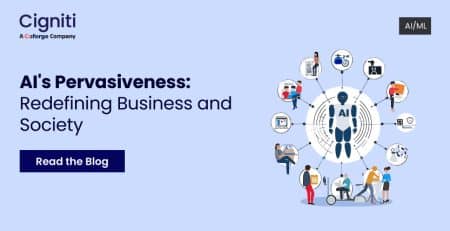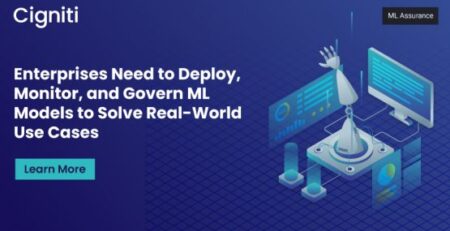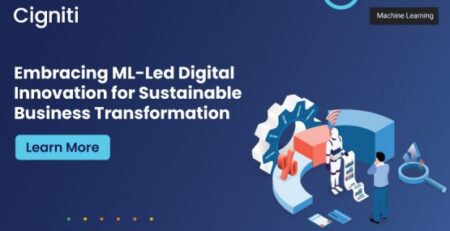The Quest for Optimal Model Performance in Machine Learning
In the vast realm of machine learning, it’s well-known that data is the lifeblood that drives model performance. Yet, as we dive deeper into the intricacies of machine learning, a pertinent question arises: Is it just about accumulating vast amounts of data?
The Deep Dive into Computational Learning Theory
At the confluence of computer science and statistics lies computational learning theory, which delves into how models assimilate information. This theory seeks to demystify the relationship between the complexity of a task and the volume of data required for efficient learning. While the sheer abundance of data in today’s digital age might seem like a boon, computational learning theory highlights a pivotal nuance: It’s not just the quantity but the quality and diversity of data that truly steer model performance.
Akin to human learning, where diverse experiences foster a more holistic understanding, machine learning models thrive when exposed to representative and varied data. Such data equips them to generalize effectively, performing adeptly across a spectrum of unseen scenarios.
Navigating Challenges with Data in Machine Learning
However, the journey to harness the correct data is fraught with challenges. In many contexts, acquiring new data can be expensive, labor-intensive, or intrusive. It is simply accumulating more of it, especially if it’s redundant or lacks new perspectives, can yield diminishing returns. This brings forth the essence of strategic data selection and methodologies like active learning. These techniques prioritize curating and acquiring data points that offer the most value, ensuring they nurture models with information that genuinely enhances their learning. In this landscape, computational learning theory stands as a beacon, guiding practitioners to make informed decisions and ensuring models are both efficient and effective.
However, simply adding more data isn’t always the answer, especially if that data is redundant or doesn’t capture the nuances of the problem space. So, how can we make the most of our data?
Understanding VC Dimensions
The Vapnik-Chervonenkis (VC) dimension, introduced in the 1970s by Vladimir Vapnik and Alexey Chervonenkis, is a pivotal metric in machine learning, quantifying a model’s complexity and capacity to fit data. Models with high VC dimensions, such as deep neural networks, possess the flexibility to capture intricate patterns, but they also run the risk of overfitting, especially with limited data.
In contrast, simpler models with lower VC dimensions, like linear classifiers, tend to generalize better due to their inherent constraints but might miss nuanced patterns. This delicate interplay between model complexity (as represented by VC dimensions) and the risk of overfitting underscores the value of techniques like active learning, which strategically selects the most informative data points to train models efficiently, optimizing their performance.
Harnessing the Power of Active Learning
Does active learning genuinely help in improving model performance? The answer is a resounding yes. Traditional machine learning methods often operate under the assumption that every data point is equally important. Active learning challenges this notion. It capitalizes on the idea that not all data points are equally informative. By selectively querying the most valuable or ambiguous points for labeling, active learning ensures that the model is trained on data that adds the most value, improving performance even with fewer labeled instances.
Strategies like ‘Uncertainty Sampling’ and ‘Query-by-committee’ exemplify the prowess of active learning. These methods guide the model to seek out and request labels for instances in uncertain or ambiguous regions of the data space. Over time, this targeted approach refines the model, enhancing its robustness and accuracy.
Emerging Trends in Active Learning Research
- Active learning with reinforcement learning: Active learning and reinforcement learning are complementary machine learning paradigms. Reinforcement learning agents learn to perform tasks by interacting with an environment and receiving rewards for actions that lead to desired outcomes. Active learning algorithms can guide reinforcement learning agents to explore the environment more efficiently and learn more quickly.
- Active learning with transfer learning: Transfer learning is a technique where knowledge learned from one task is used to improve performance on a different task. Active learning algorithms can select data points from the new task most informative for the transfer learning model.
A Real-World Application: HVAC Coil Detection
We participated in numerous case studies, including collaborating with a leading Heating, Ventilation, and Air Conditioning (HVAC) company. Our task was to detect HVAC coils from images, which would be applied to a live video where the coils pass along an assembly line. To expedite the annotation process, we utilized an active learning approach. This approach helped us avoid capturing redundant images and speed up the annotation process. Our objective was to perform problem-specific analysis on these images. By concentrating on the most informative images through active learning, we accelerated the data annotation process and ensured that the model was trained on the most representative instances. This serves as just one example of how active learning significantly enhances model performance and efficiency.
Conclusion
In the quest for optimal model performance, active learning emerges as a beacon, illuminating the path to efficient and effective learning. By focusing on data quality and leveraging the power of selective querying, active learning bridges the gap between limited data and high-performing models, ushering in a new era of machine learning excellence.
Cigniti’s Zastra™ reduces data annotation efforts and fastens ML model deployment, helping enterprises achieve the true market potential they deserve in the global ecosystem.
Need help? Read more about Zastra™ and learn how it can accelerate data annotation efforts.






Leave a Reply